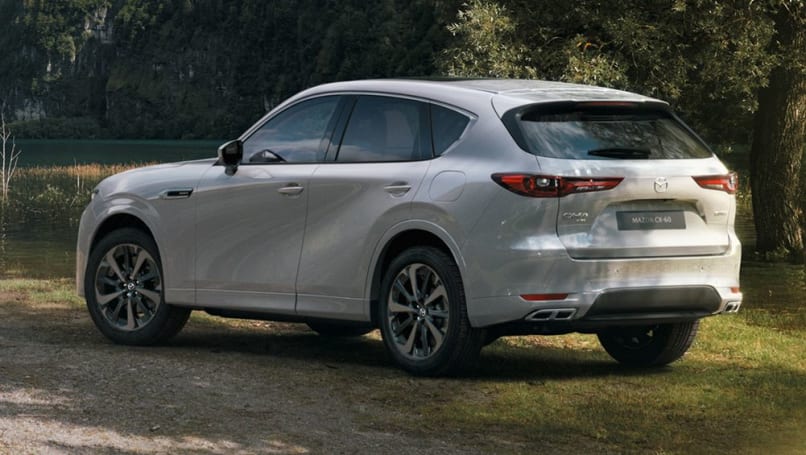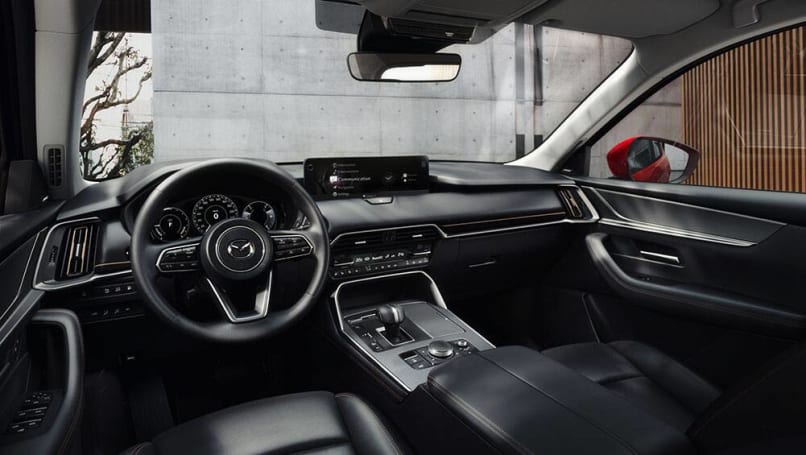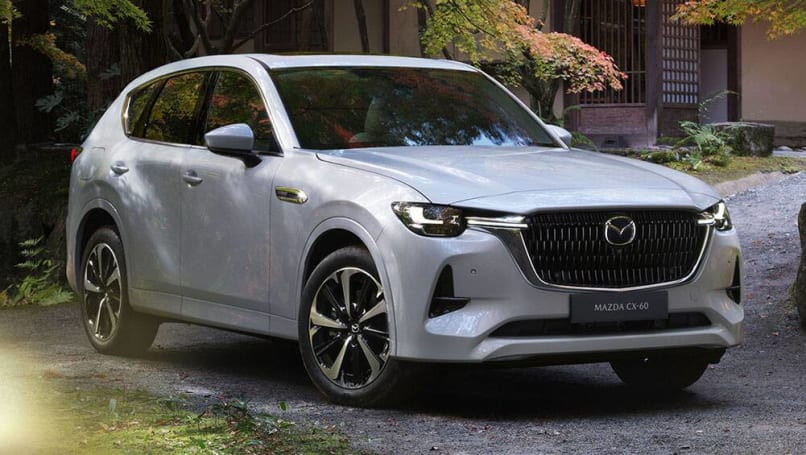
The new car sales winners of 2024: Toyota, Mitsubishi, Ford, BYD, Suzuki, GWM and more!
The Australian new car market is more competitive than ever before and the 2024...
Browse over 9,000 car reviews

Mazda has finally ripped the covers off its crucial CX-60 SUV, which not only heralds the brand’s new wave of models, but is also its first foray mass market foray into plug-in hybrid technology.
The plug-in hybrid electric vehicle (PHEV) version of the CX-60 makes use of a 2.5-litre Skyactiv four-cylinder petrol engine and a 100kW electric motor, resulting in a combined output of 241kW/500Nm.
This will make it Mazda Australia’s most potent model, beating the 140kW/450Nm BT-50 ute, 170kW/420Nm CX-9 and 140kW/450Nm diesel-powered CX-5.
Paired to the powertrain is a newly-developed eight-speed automatic transmission that sends drive to all four wheels, which results in a zero-to-100km/h spring in just 5.8 seconds.
With a 17.8kWh battery in tow, the CX-60 is able to travel 63km before the petrol engine kicks in, but Mazda is yet to detail recharging times.
Fuel economy meanwhile, is pegged at a scant 1.3 litres per 100km.
For those who aren’t ready to adopt an electrified powertrain, the CX-60 will also be made available with two brand-new straight six engines at a later date – a 3.0-litre e-Skyactiv X petrol and a 3.3-litre Skyactiv-D diesel.

Power and torque outputs for these new engines are yet to be revealed, but both make use of a 48-volt mild-hybrid system that Mazda calls M Hybrid Boost, and both are fitted with the new eight-speed automatic transmission that sends drive to all four wheels in the CX-60.
However, Mazda points out that “the Skyactiv-D diesel unit and e-Skyactiv X petrol engine have also been developed to be equipped with rear-wheel drive only”, which is expected to surface in the new-generation Mazda6 mid-size sedan expected to be shown later this year.
Measuring 4745mm long, 1890mm wide, 1670mm tall and with a 2870mm wheelbase, slotting the CX-60 neatly between the mid-size CX-5 and three-row CX-8 dimensionally, while weight in the PHEV variant is pegged at around 2000kg.

As a result, the CX-60 will swallow 570 litres of volume in the boot – much more than the 442L on offer in the CX-5.
Pricing for Australian cars is yet to be revealed, but Mazda is positioning the CX-60 above the CX-5 mid-size SUV that kicks off at $32,190 before on-road costs.
In the right-hand-drive UK market, the CX-60 PHEV kicks off at £43,950 ($A79,197) and is available in three grades, making it around 50 per cent more expensive than their entry-level £28,145 CX-5.

If Mazda Australia follows the same strategy, the CX-60 could start at around $50,000 when it enters local showrooms later this year, but with the Japanese brand looking to reposition itself as a mainstream premium alternative to the likes of Toyota and Hyundai, that figure is expected to be higher.
Keep in mind, Mazda UK does not offer the CX-8 or CX-9, making the CX-60 its flagship model.
Features such as 20-inch wheels, heated and cooled front seats, a sunroof and electronically adjustable front seats are available, while safety is also an important point of differentiation for the CX-60, with tech including a surround-view monitor, hill descent control, adaptive cruise control, traffic sign recognition and autonomous emergency braking featuring.
Comments